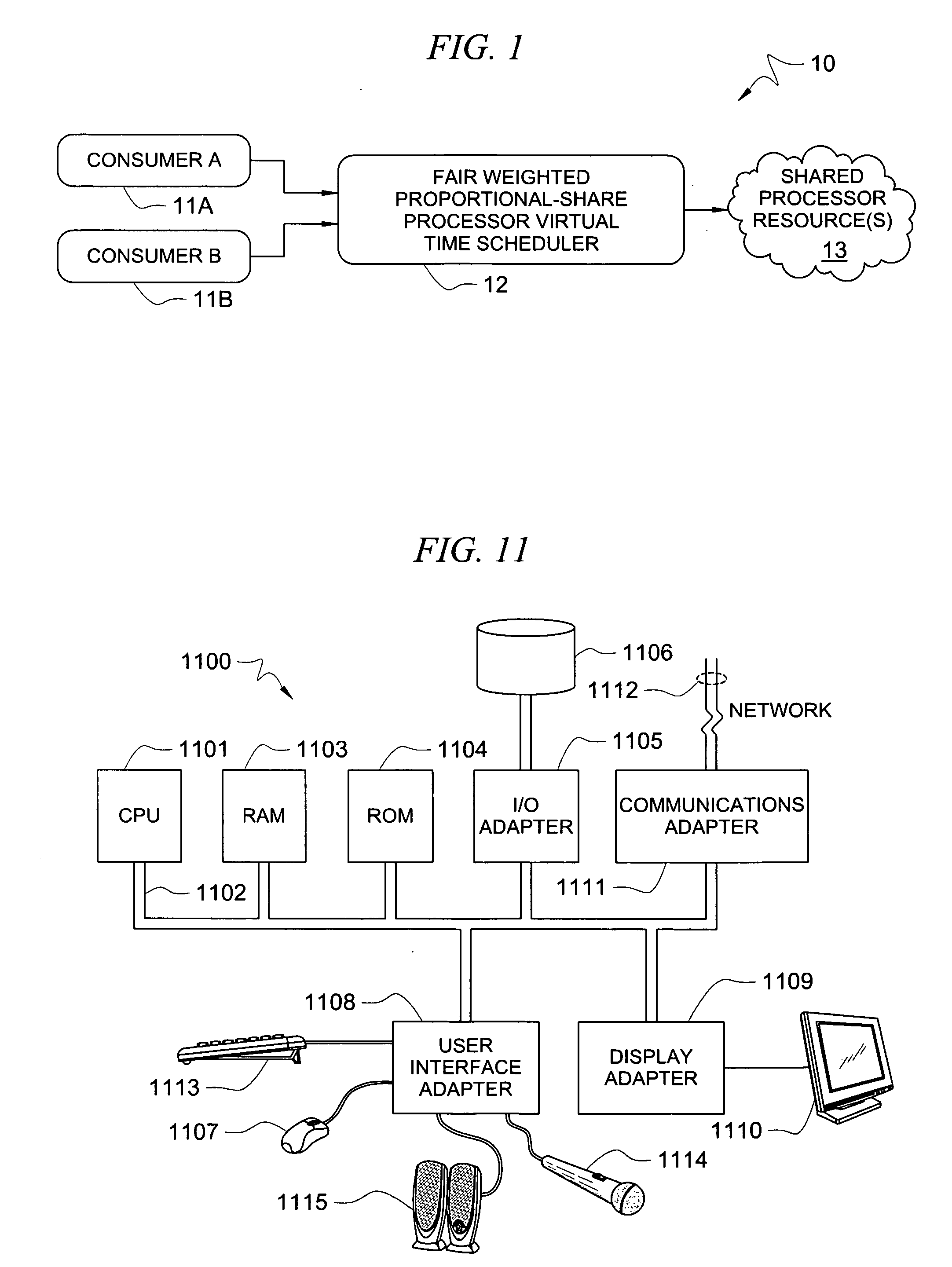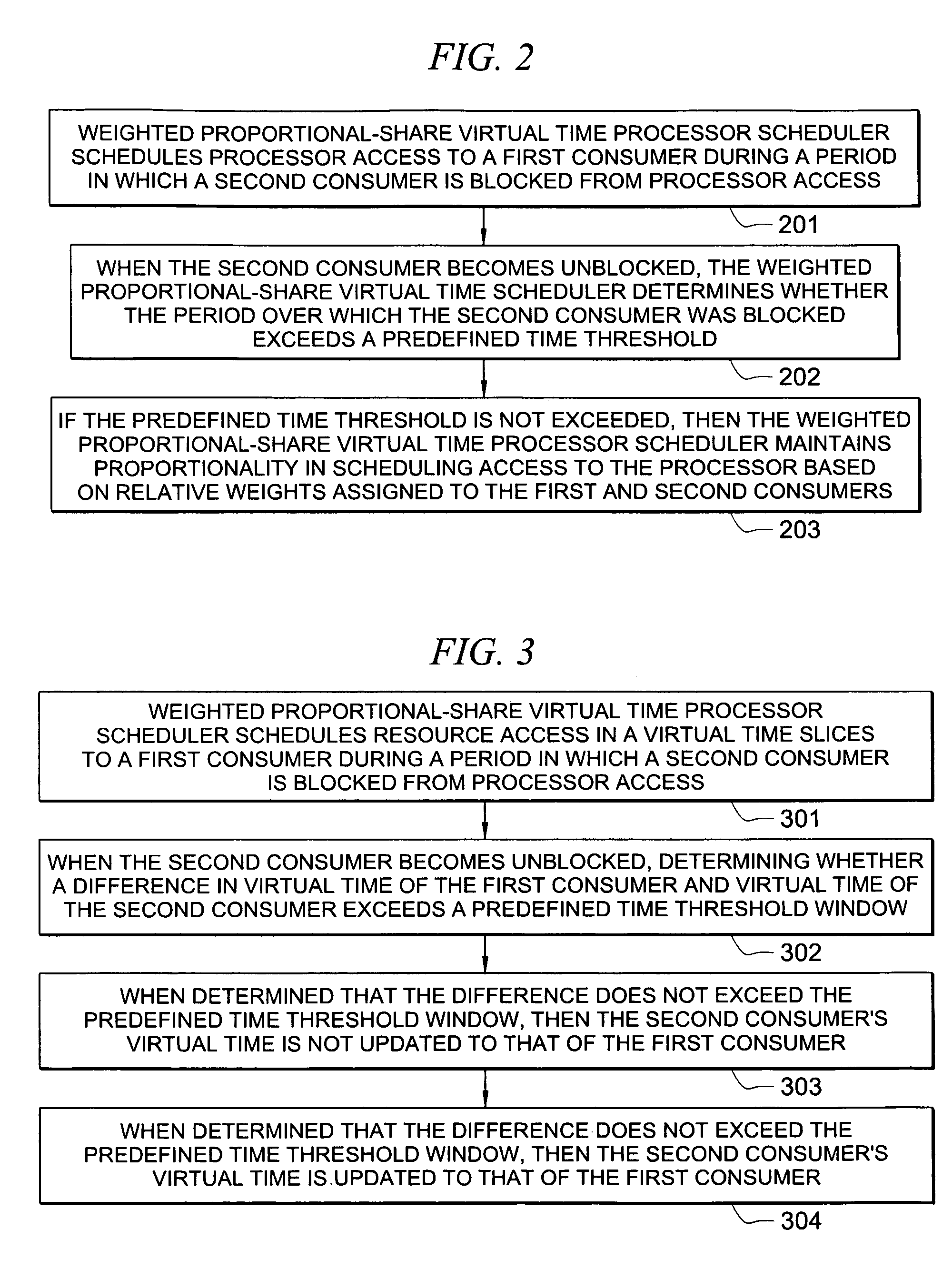Fair weighted proportional-share virtual time scheduler
a proportional-share, scheduler technology, applied in the field of resource scheduling, can solve the problems of reducing the allocation of processors' capacity to such workloads, leaving the remaining consumers with insufficient capacity to support their respective workloads, and generally consuming capacity for servicing the consumer's workload
- Summary
- Abstract
- Description
- Claims
- Application Information
AI Technical Summary
Benefits of technology
Problems solved by technology
Method used
Image
Examples
experiment 1
[0075] Only Dom0 and Dom1 are running. Dom0 hosts a disk driver. Dom1 performs a disk read of 1 GB file, and there are not any other competing tasks.
[0076]Experiment i (10 hosts a disk driver. Dom1 performs a disk read of 1 GB file, and Domi (1
[0077]FIG. 9A shows CPU utilization of Dom0, Dom1 and Dom2 across eight experiments under the classic BVT scheduler for this exemplary case study. FIG. 9A demonstrates that Dom0 and Dom1 both have a very limited CPU consumption since Dom1 executes a disk read that is an I / O-intensive application, and Dom0 hosts disk driver and performs I / O processing on behalf of Dom1. The interesting trend is that under increasing number of competing CPU-intensive domains, CPU utilization of Dom0 and Dom1 is decreasing while still not being able to “consume” their share. This example demonstrates the “stolen” CPU share by CPU-intensive domains in the classic BVT scheduler desc...
PUM
 Login to View More
Login to View More Abstract
Description
Claims
Application Information
 Login to View More
Login to View More - R&D
- Intellectual Property
- Life Sciences
- Materials
- Tech Scout
- Unparalleled Data Quality
- Higher Quality Content
- 60% Fewer Hallucinations
Browse by: Latest US Patents, China's latest patents, Technical Efficacy Thesaurus, Application Domain, Technology Topic, Popular Technical Reports.
© 2025 PatSnap. All rights reserved.Legal|Privacy policy|Modern Slavery Act Transparency Statement|Sitemap|About US| Contact US: help@patsnap.com



